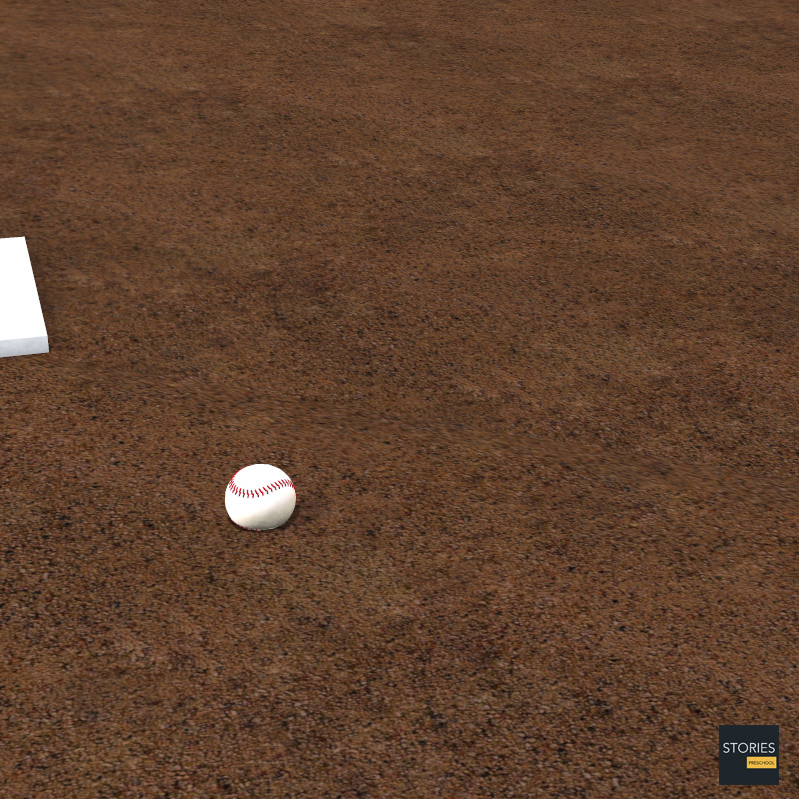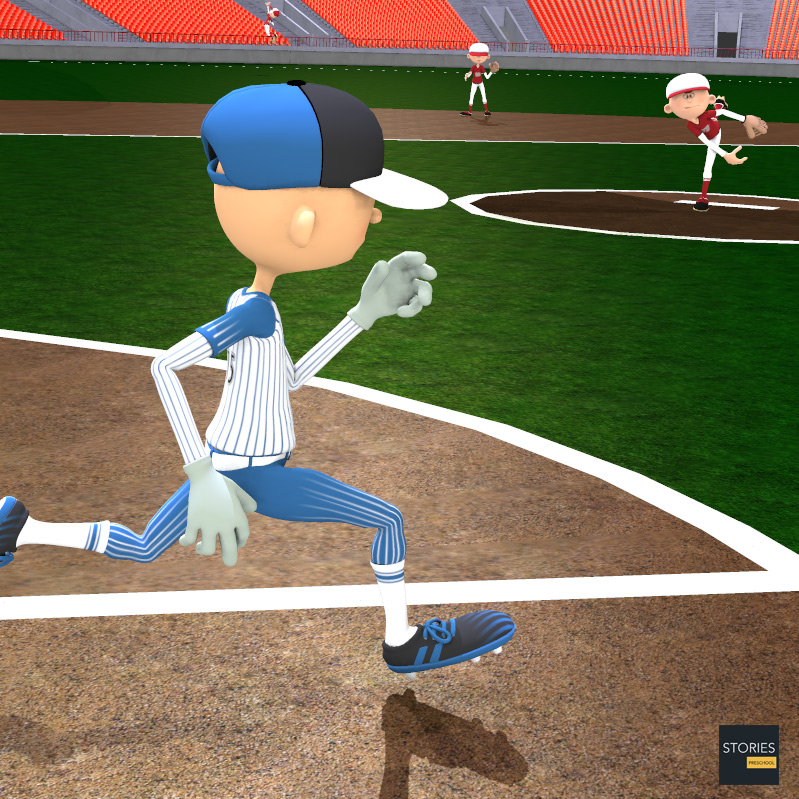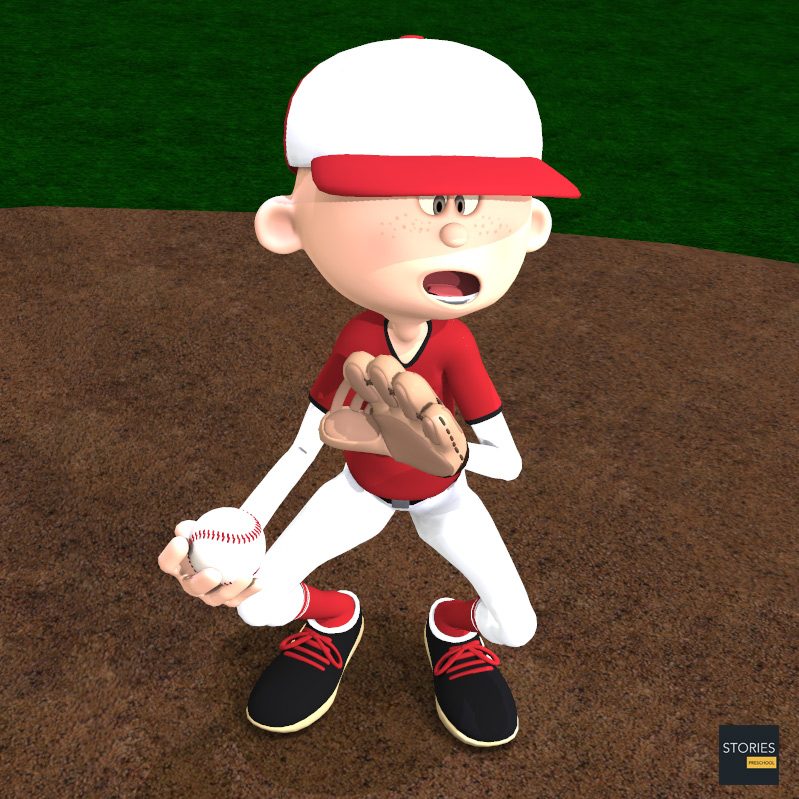Baseball

Baseball Bunt
A bunt is a special type of offensive technique in baseball or fast pitch softball. In a bunt play, the batter loosely holds the bat in front of the plate and intentionally taps the ball into play.

The primary goal in bunting is to ground the ball into fair territory, as far from the fielders as possible, generally while staying within the infield. This requires not only physical dexterity and concentration, but also a knowledge of the fielders' positions, their relation to the baserunner or baserunners, their likely response to the bunt, and knowledge of the pitcher's most likely pitches.
The bunt is often characterized by the batter turning his body toward the pitcher and sliding one hand up the barrel of the bat to help steady it. This is called squaring up. Depending on the type of bunt, the batter might square well before the pitcher begins throwing, or as the pitch is being batted.
Sacrifice Bunt
In a sacrifice bunt, the batter will put the ball into play with the intention of advancing a baserunner, in exchange for the batter being thrown out. The sacrifice bunt is most often used to advance a runner from first to second base, although the runner may also be advanced from second to third base, or from third to home. The sacrifice bunt is most often used in close, low-scoring games, and it is usually performed by weaker hitters, especially by pitchers in games played in National League parks. A sacrifice bunt is not counted as an at-bat. In general, when sacrifice bunting, a batter will square to bunt well before the pitcher releases the ball.
The squeeze play occurs when the batter sacrifices with the purpose of scoring a runner from third base. In the suicide squeeze, in which the runner on third base starts running for home plate as soon as the pitcher starts to pitch the ball, it is integral that the batter bunt the ball successfully, or the runner will likely be tagged out easily. Due to the high-risk nature of this play, it is not often executed, but can often be an exciting moment within the game. If a runner scores in a squeeze play, the batter may be credited with an RBI.
Bunting for a Base Hit
A batter may also bunt for a base hit. This is not a sacrifice play, because the batter is trying to reach base safely, without any intention of advancing a runner. A batter may try to bunt for a base hit while there are runners on base. In this case, if the runner advances and the batter is thrown out, and if the official scorer judges that the intention of the batter was to bunt for a base hit, then the batter will not receive credit for a sacrifice bunt. A batter bunting for a base hit will often hold back his bunt while the pitcher begins delivering the ball, in order to surprise the fielders. If successful, the bunt is scored as a hit single. Rarely does a bunt result in an extra base hit (double, triple or home run).
Often when attempting to bunt for a base hit, the batter will begin running as he is bunting the ball. This is called a drag bunt. Left-handed batters perform this more often than right-handed hitters, because their stance in the batter's box is closer to first base, and they do not need to run across home plate, where the ball will be pitched, as they bunt.

The action of squaring to bunt is compromised during a drag bunt, as the feet are not set. Players sometimes get one hand up the barrel, and other times bunt with both hands at the base of the bat.
Swinging Bunt
A swinging bunt occurs when a poorly hit ball rolls a short distance into play, much like a bunt. A swinging bunt is often the result of a checked swing, and only has the appearance of a bunt. It is not a true bunt, and if the scorer judges that the batter intended to hit the ball, it cannot be counted as a sacrifice. There is also a "slug" bunt that is intended to surprise the opposing defense, as the desired effect is a hard-hit ball into the infield defense that is expecting a standard bunt.
Fielding a Bunt
Fielding a bunt is often more difficult than fielding a regularly batted ball. Bunts are often hit slowly, so fielders must charge the ball to get to it quickly, in order to throw out a runner in time. Well-placed bunts sometimes can be impossible to field, and often go as base hits. The main idea in bunting for a base hit is to hit the ball fast enough to get it by the pitcher, but slow enough to not give the other infielders enough time to make a play. Bunting a ball into no-man's land — the triangle between the locations of the pitcher, first baseman, and second baseman, and between the pitcher, catcher and third baseman, — often succeeds because of confusion among the fielders as to which should field the ball and which should receive the throw to first base. It is common for all three fielders to try to field the ball, and for nobody to cover the bag, or for no one to try to field the ball, assuming someone else will handle it. Teams often use a rotation play to defend against the bunt: the first baseman will charge the bunt and the second baseman "rotates" out of his usual position to cover first base and receive the throw. The shortstop covers the base the advancing runner is headed towards.
Special Rules
A foul bunt that is not caught in flight is always counted as a strike, even if it is a third strike and thus results in a strikeout of the batter. This is distinct from all other foul balls which, if not caught in flight, are only counted as a strike if not a third strike. This special exception applies only to true bunts, not on any bunt-like contacts that might occur during a full swing or check-swing. If a batter bunts the ball and his bat hits the ball again after initial contact, it is a dead ball even if by accident.

Additionally, the infield fly rule is not applied to bunts popped-up in the air. Instead, the intentional drop rule (Rule 6.05l) that also applies to line drives can be invoked.
SPORTS

RESOURCES
This article uses material from the Wikipedia articles "Baseball" and "Bunt", which is released under the Creative Commons Attribution-Share-Alike License 3.0.
© Stories Preschool. All Rights Reserved.












